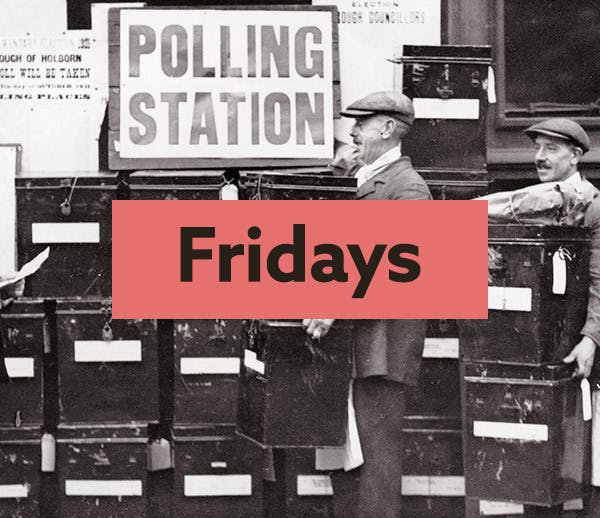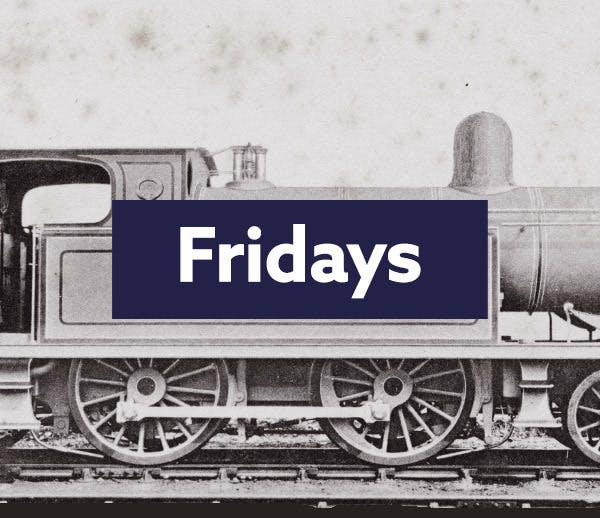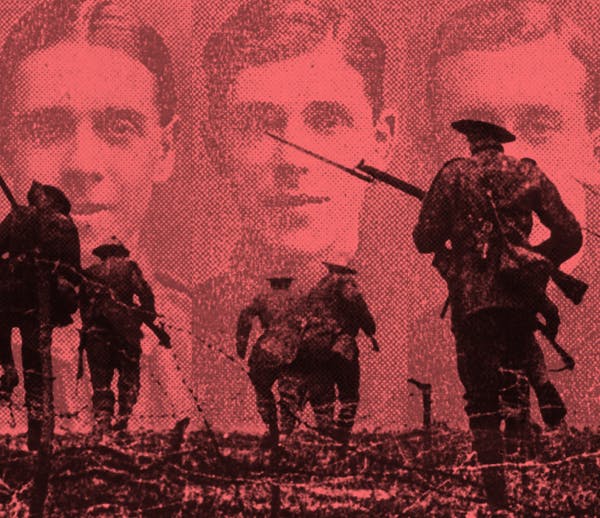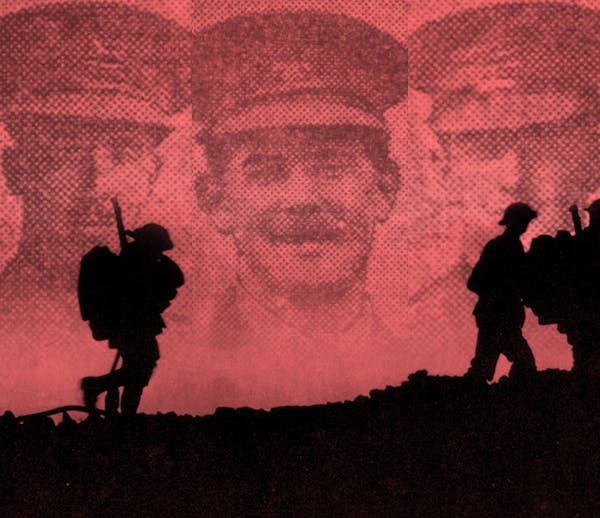Does your family tree have roots in British India?
6-7 minute read
By The Findmypast Team | February 5, 2020
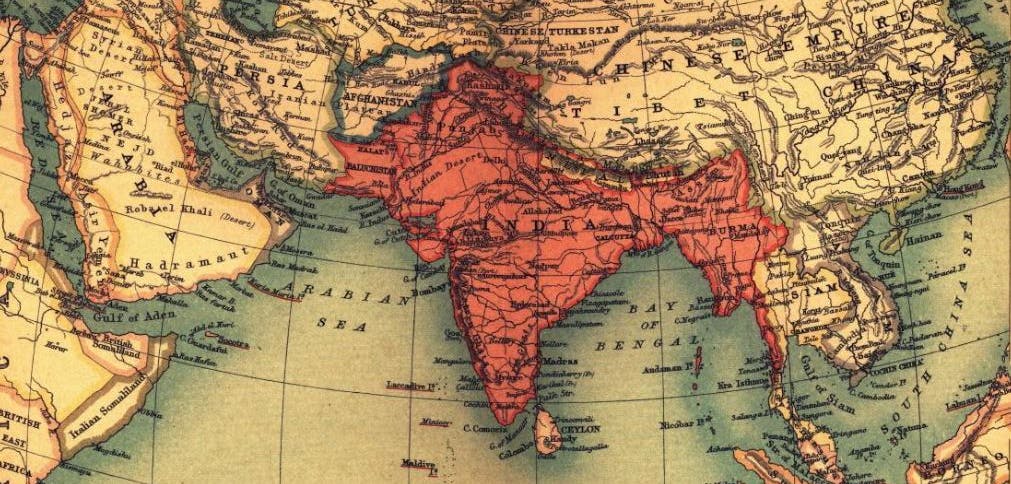
Findmypast's exclusive British in India collection details the lives of your ancestors in the British Raj from 1698 to 1947.
The fascinating British in India collection, released in partnership with the British Library, offers an unrivaled opportunity to explore family history on the subcontinent. It consists of a fully-indexed archive of more than five million records.
Covering 200 years of rich and colorful history, the collection records both eras of British Rule in India; the East India Company Rule 1757–1858 and the Raj 1858- 1947 when India was ruled under the British crown.
The records cast light on the careers and family lives of ex-pats, the significance of the East India Company, the offices of power, infant mortality, Anglo-Indian marriages, family relationships, and the lives of women in India.
Trace ancestors in British India
Compiled by the India Office, the government department responsible for overseeing administration in the Indian territories, the British in India records chronicle the lives of Europeans living in areas under British influence and include individuals from all walks of life. Lowly company privates, wealthy merchant princes, the highest-ranking members of the military, civil, legal and medical establishments, their families and many 'non-official' inhabitants such as merchants, planters, missionaries, and free mariners can all be found within the collection.
The details of ex-pats' lives and deaths are documented in a variety of records ranging from returns of baptisms, marriages and burials, civil and military pensions and wills. Individual record sets available to search within the collection include:
India Office births, marriages & deaths
The entire collection contains over 1.7 million births, baptisms, marriages, deaths and burials from British India, Burma and other territories connected to the India Office (St Helena, Sumatra, Kuwait, Aden, Penang, Macao, etc).
They come in a variety of different forms including ecclesiastic returns, East India Company writers' petitions, birth & baptismal certificates in cadet papers, presidency baptisms, Madras Chaplains' Stations & Sundry Bengal baptisms, and cadet patrons & allocations. They relate almost entirely to European and Eurasian Christians although a few local converts are included.
The Ecclesiastical returns include Anglican parish registers for the three presidencies (Bengal, Bombay, Madras), Roman Catholic and civil registers and records for other regions connected to the India Office (Aden, Burma, Kuwait, Princely States, St Helena, etc.). You'll find contemporary copies of registers sent to London for the information of the East India Company and the India Office. The practice of sending such information was initiated by the chaplains of the East India Company's principal settlements and became a regular feature of the British administration in India. It is thought that roughly 75% of all information recorded in India went through this process.
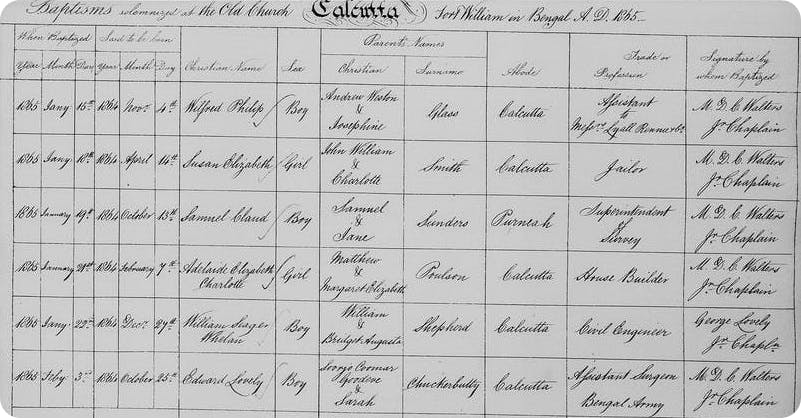
Baptism register transcript from the Presidency of Bengal, 1850.
India Office Births & Baptisms are searchable by name, birth date, baptism date, place, and presidency. They consist mainly of ecclesiastical returns although some birth registers are also included. The registration of births was not compulsory in British India and very few were recorded. Those that did not generally appear until the 1920s.
Also included are a significant number of East India Company Cadet Papers and Indian Civil Service records. The information recorded in these documents is taken from the application forms of Company Cadets, Civil Engineers, candidates for the Indian Telegraph Department, the Public Works Department, and Indian Forest Service, surgeons, assistant surgeons and candidates for the Indian Medical Service. After 1714, civil servants were appointed to overseas posts by an elaborate system of patronage exercised by members of the East India Company Court of Directors. Candidates, who were first nominated by a director upon recommendation of some mutual acquaintance or from personal knowledge, submitted autograph petitions for employment to the court. Upon appointment, they entered into a bond with two sureties for the faithful performance of their duties.
The cadet papers consist of application forms and petitions, birth or baptism certificates produced to satisfy age regulations, testimonials, and related correspondence and memoranda, forwarded to East India House when a cadet's appointment was under consideration. Baptism certificates are lacking in some of the early papers but appear regularly from around 1795 onwards. Officer Cadets for the East India Company's armies (Bengal, Madras, and Bombay) were generally appointed in the UK upon the nomination of a member of the Court of Directors, also (after 1784) of the Board of Control. Cadets were often 'recommended' to their patron by a mutual friend or acquaintance and after nomination, they were obliged to forward to East India House a formal application, a certificate of age and relevant testimonials. Final approval of their appointment was given after they had appeared before the Committee of Correspondence (until 1809), the Military Seminary Committee (1809-1834) or the Political and Military Committee (after 1834).
India Office Marriages are also searchable by name, marriage year, spouse's first name, spouse's surname, place, and presidency. The names of brides are included and fully indexed while the names of the bride and groom's fathers are included from the mid-19th century onwards.
Images of the original documents will reveal additional information such as the couple's rank or profession and place of residence.
India Office Deaths & Burials can be searched by name, birth year, death year, place and presidency. Images of the original documents may reveal your ancestor's occupation, place of birth, and, from the mid-19th century onwards, cause of death.
India Office Wills & Probate
Over 200,000 wills and probate records of European soldiers and civilians who died in India and Burma are also available to explore. The collection can be searched by name, event year, birth year, death year, place, presidency, additional keywords and includes wills and administrations, inventories, and accounts of deceased estates.
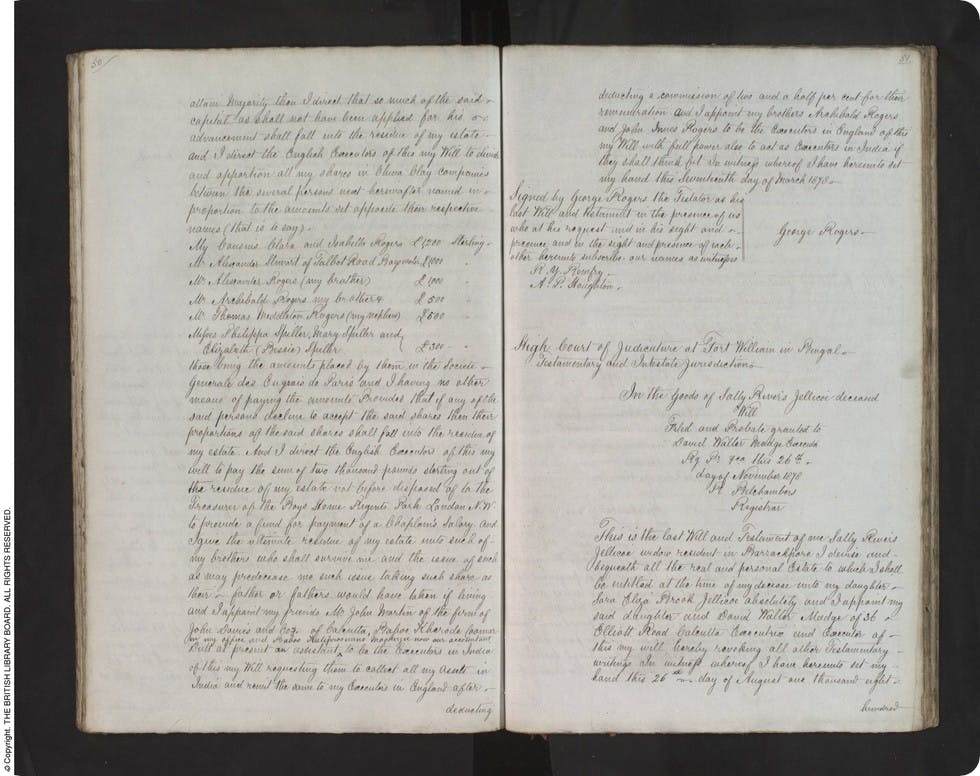
An 1878 will & testament from Calcutta.
Inventories and accounts of deceased estates give the name of the deceased and a full inventory of their possessions at death while grants of representation are documents granted under seal by the High Court of the Presidency. Grants gave authority to a named person (or persons) to deal with a deceased person's estate.
British India Office Assistant Surgeons
These records list the details of assistant surgeons who traveled to India to ply their trade and consist of the declaration forms they filled out when applying for their position, baptism records (proof of age) and letters of recommendation. The records can be searched by name, birth year baptism year and appointment year.
The East India Company's medical men were first organized into a regular service in 1764. In 1773, the Company appointed a board in London to examine candidates for posts as assistant-surgeons. Like the officer cadets, the Company's Directors nominated them. They had to provide a certificate of age, testimonials, and evidence of their qualifications before taking their places in an annual list of rank.
The India Act of 1853 opened the service to competitive examination and the first appointments were made in 1855. After 1882, the style 'assistant' was dropped, and in 1896 the separate Presidency establishments were amalgamated into a single Indian Medical Service.
British India Office Army & Navy Pensions
India Office Army & Navy Pensions are searchable by name, event year, birth year and presidency and consist of pension registers from the Military Funds, Indian Navy Fund, the Madras Military Family Fund, The Lord Clive Military, and Indian Navy pension records.
Military and Navy funds provided benefits for the widows and children of officers, chaplains and surgeons of the British Indian Army and Royal Indian Navy. They can include the name of the subscriber, dates of birth/baptism, marriages, retirement, and death; name of wife/wives and dates of birth, remarriage, and death; names of children, their dates of birth, dates of daughters' marriage, sometimes with husband's name.
The Lord Clive Military fund provided benefits for European officers and other ranks of the East India Company and Indian Army and their widows but not their children. It was founded around 1770 and the last pensioner was admitted around 1885. These were 'ex gratia' pensions, awarded on a charitable basis and not as of right; there were no subscriptions to the fund and the records relate mainly to payments made in the UK.
East India Company & Civil Service Pensions
East India Company & Civil Service Pensions can be searched by name, birth year, event year and death year and consist of pension registers from the Poplar and Civil Funds spanning the years 1749 and 1957.
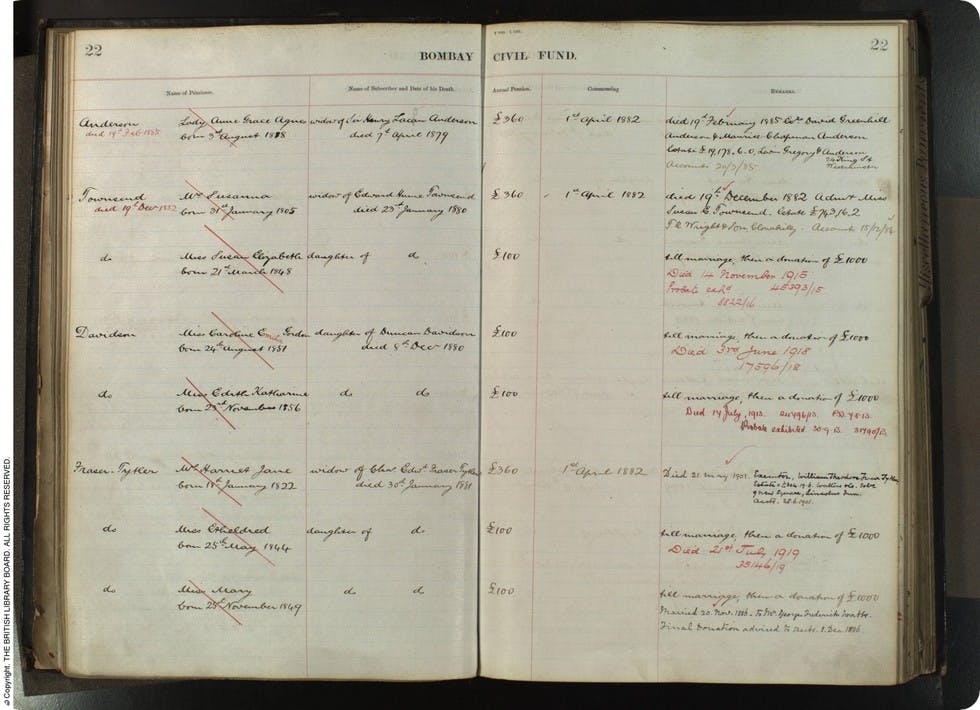
An 1879 Civil Service Pension Record from the Bombay Civil Fund.
The Poplar Fund applied to officers and seamen of the East India Company mercantile marine and their families. Service records are given, as well as details of marriages and the baptisms of children.
The Bengal Civil Fund, the Madras Civil Fund, and the Bombay Civil Fund provided benefits for the widows and children of members of the East India Company and Indian Civil Service. They also include details of the applicant's occupation, family members and period of employment as well as details of payments.
Discover family in the British Raj
Combine this fascinating British Library collection with our other records documenting the British and Irish in India and you'll be able to piece together your family's time there over generations. Go to A-Z of records and type 'India' now to see what other record sets are available to search.

